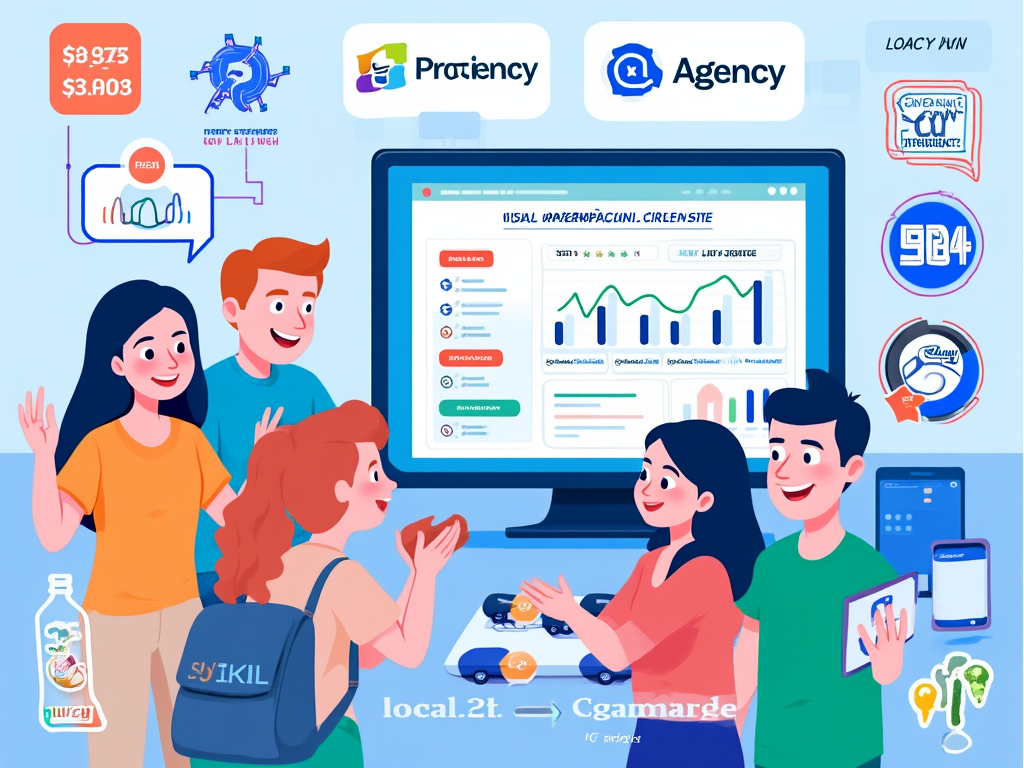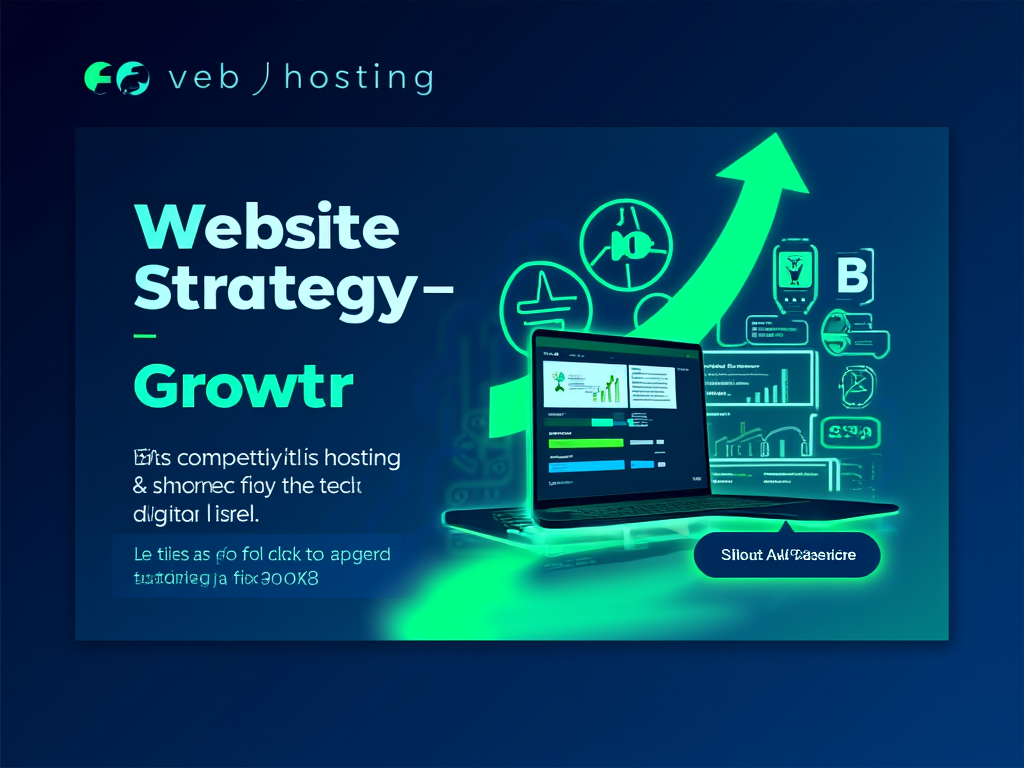Mobile-friendly website development tips for 2025
Meta description:
Discover essential mobile-friendly website development tips for 2025, including responsive design, fast loading, advanced CSS, and SEO best practices for optimal mobile user experience.
Introduction
In 2025, if your website isn’t mobile-friendly, you’re playing a high-stakes game with a losing hand. Picture this: over 50% of global web traffic streams from mobile devices, swallowing competition like a hungry shark. It’s not just about looking good on a smaller screen; it’s about crafting an experience that captivates and compels users to engage. Welcome to the world of mobile-first development, where the charge of design champions the small screen and interfaces spark conversations that linger long after visitors leave your site.
Responsive and mobile-first design: Foundation for 2025
Responsive design serves as the bedrock of any successful mobile-friendly website. Imagine your website as a chameleon, seamlessly blending into different environments—be it the petite screen of a smartphone or the expansive display of a desktop. The crux of a successful strategy for 2025 lies in adopting a mobile-first approach.
Key practices for implementing responsive and mobile-first design:
Firstly, embrace a mobile-first mindset. This philosophy pushes you to prioritize essential content for smaller screens, ensuring that every element serves a purpose. Once you nail that core functionality, elevate the design for larger screens using media queries that enhance rather than overwhelm.
Then there’s the magic of fluid grids and flexible layouts. Tools like CSS Flexbox and CSS Grid simplify the creation of adaptable structures that respond to user behavior. Picture a responsive grid as a well-trained dancer, gracefully moving to fit the rhythm of a display—never too big, never too small, just right.
Next, let’s delve into the nuances of advanced media queries. The introduction of Level 4 CSS features brings context-aware adjustments that respond not just to screen size but to the container itself. It’s as if your design senses the user’s environment, curating a tailored experience at every touchpoint.
Typography plays a critical role too. Implement flexible and responsive typography using relative units like em or rem. The effect? Text that elegantly grows or shrinks, maintaining clarity and impact across devices. Aim for a comfortable base font size of around 16px paired with a line height that invites reading, leading to better engagement.
As for images, the right choice can make your site shine. Enable responsive images with <picture> elements and srcset attributes, adjusting their size to every viewport. This not only enhances load speed but preserves quality and visual storytelling, guiding users through a narrative crafted just for them.
Don't forget to design touch-friendly interfaces. Imagine your users tapping tiny buttons and links, yearning for a seamless interaction. Provide ample space and intuitive arrangements—each element a handshake, welcoming them into your world.
We must also champion regular cross-device and cross-browser testing. Picture this: your website gliding across the multitude of devices in the wild, ensuring a consistent and delightful user experience. That level of attention speaks volumes—users notice when things work just as they should.
Examples and statistics:
Consider this: research indicates that over 50% of traffic now comes from mobile devices. Google has also shifted its strategy to prioritize mobile-first indexing. This underscores a clear message—if you aren't playing in this arena, you're not just missing out; you're falling behind.
Performance optimization and SEO for mobile
In the world of mobile websites, speed is king. Slow-loading pages are akin to standing in a long queue at a poorly managed coffee shop—frustrating and bound to drive potential customers away. Google’s Core Web Vitals are a critical determinant of how well you’ll rank on mobile, making performance improvements and SEO strategies a top priority.
Critical strategies to optimize performance and SEO on mobile:
First things first, leverage caching and CDNs. Deploy browser caching and Content Delivery Networks (CDNs) to deliver resources swiftly, no matter where in the world your visitors are. This cut-right-through-the-clutter approach ensures that users are met with instantaneous experiences every time they tap.
Next, the artwork of compressing and optimizing images can't be overstated. Shift towards modern image formats like WebP and AVIF—they’re like high-definition magic wands that reduce loading times without sacrificing visual quality. Every second counts.
Consider integrating Accelerated Mobile Pages (AMP). AMP reworks standard HTML for maximum speed on mobile devices, streamlining content delivery. Imagine the exhilaration of a site that loads in a blink, fostering higher user engagement and improved search rankings.
Don’t allow heavy JavaScript to slow down your performance. Focus on the essentials and load script files asynchronously while deferring those that aren’t immediately necessary—just like walking a tightrope carefully, balancing functionality with performance.
Enabling browser caching goes hand-in-hand with user retention. By allowing the device to store page assets locally, you can serve repeat visitors with rapid load times, giving them a reason to return.
And security? That’s non-negotiable. Protect user data with SSL certificates and robust login protocols—the digital equivalent of a fortified castle protecting the treasures inside. Employ strong authentication and anti-malware tools to further ensure a safe haven for your visitors.
Additional practical tips:
-
Use Google’s PageSpeed Insights regularly to keep an eye on performance metrics and snag potential bottlenecks before they escalate.
-
Simplify forms and minimize text input on mobile devices. This approach reduces friction in user interactions and curtails abandonment rates—think of it as rolling out a red carpet for a smoother journey.
-
Customize navigation menus tailored for mobile use, introducing collapsible hamburger menus that make essential information readily accessible.
Localized example:
Let's look at a real-world impact. A UK retailer revamped their mobile site using AMP alongside responsive images, ultimately slashing their load time by a staggering 40%. The result? A 30% increase in mobile traffic coupled with a remarkable boost in conversions during peak shopping periods.
While this journey through mobile-friendly development tips paints a vivid picture, let’s remember that the landscape is continually evolving, and the secret to thriving within it lies in a commitment to adaptability and user-centric design.
FINDDOMAIN.GE (Internet services LLC) is a very interesting and rapidly developing IT company. The main directions are: web development, domain and web hosting. It also offers clients sub-services and outsourcing related to the main services.
BEST OFFERS:
Do you want to create your own company website or create your own online business on the Internet?
– WEB HOSTING
– DOMAIN REGISTRATION
– WEB DEVELOPMENT
– SITE BUILDER



Final touches and user experience enhancements
As we wrap up this exploration of mobile-friendly website development, let’s dive into some final touches that enhance user experience. After ensuring a rock-solid foundation in responsive design, performance, and SEO, it’s time to engage users and elevate their journey on your site.
Intuitive navigation design
Think of navigation as the map guiding users through the vast landscape of your content. A cluttered or confusing menu can turn eager visitors into lost wanderers. Make navigation intuitive. Utilize clear and concise labels that resonate with your audience. Collapsible menus are a great way to conserve space on smaller screens while still allowing access to essential content.
Consider incorporating a search feature prominently within your layout. This addition empowers users to find what they need quickly, reducing frustration and time spent searching for information.
Engagement through interactive elements
Interactive elements can significantly enhance user engagement. Think about adding features such as sliders and carousels that allow users to consume content interactively. However, balance is key—avoid overwhelming users with too much movement or complex animations that might detract from the overall experience.
Consider integrating call-to-action buttons that stand out—use contrasting colors or larger sizes to ensure they capture attention effortlessly. Each CTA should convey a sense of urgency and relevance, prompting users to take the next step on their journey.
Accessibility: The silent player in web development
Making your website accessible isn’t merely a checkbox item; it’s a promise of inclusivity to all users. Accessibility speaks to the heart of user experience—it’s about ensuring everyone, regardless of ability, can navigate and engage with your website.
Key practices for enhancing accessibility:
-
Use color contrast wisely: Ensure sufficient contrast between text and background colors. This adjustment benefits users with visual impairments and validates a more enjoyable reading experience for everyone.
-
Alt text for images: Provide descriptive alternative text for images. This not only aids visually impaired users who rely on screen readers but also strengthens your SEO strategy by giving context to what each image conveys.
-
Keyboard navigation: Make sure all interactive elements are accessible via keyboard shortcuts. This practice supports users who may be unable to operate a mouse or other pointing devices.
-
Accessible forms: Label fields clearly and utilize validation messages communicated effectively to guide users through form submissions without confusion.
Progressive web apps (PWAs) and the mobile future
Stepping into 2025, one of the most exciting developments is the rise of Progressive Web Apps (PWAs). These innovative websites blur the lines between traditional websites and mobile applications, offering an immersive experience that is both responsive and engaging.
By leveraging service workers, PWAs can cache data and provide offline functionality. Think about it—users can access your content even without an active internet connection. This capability drives deeper engagement while improving retention rates.
Furthermore, PWAs can send push notifications, fostering direct communication between your brand and users. With every notification, you build a bridge, inviting users back into your ecosystem while providing them with timely updates, promotions, or essential information.
Adapting to a future of voice and AI
Let’s not forget the role of voice search and AI in shaping the mobile landscape. With the increasing popularity of voice-activated devices, optimizing your content for voice search can give you a competitive edge. This optimization means using natural language, focusing on long-tail keywords, and ensuring your site appears prominently for conversational queries.
AI-driven chatbots also enhance user interaction, providing timely support and answers to common queries. Imagine having a virtual assistant available 24/7, guiding users through their questions while simultaneously freeing up your team to focus on higher-level tasks.
In summary
In the dynamic sphere of mobile web development in 2025, the game has shifted from merely having a mobile-friendly site to offering an exceptional user experience that prioritizes performance, accessibility, and intuitive design. Embrace the mobile-first mindset, optimize for speed, and enhance interactions through thoughtful design choices.
As you venture into creating or refining your website, remember: every detail counts. From the typography choices to image optimizations and engaging features, all contribute to shaping a site that resonates with users. Future-proof your venture by integrating responsive design principles, focusing on user needs, and keeping your technology stack updated.
Every tap, every scroll, every interaction is a conversation—a moment of connection that can spark lasting loyalty. The digital world is evolving—make sure your website is not just riding the wave but leading it.
Relevant resources:
– [Google’s Web Fundamentals on Responsive Design](https://developers.google.com/web/fundamentals/design-and-ux/responsive)
– [Understanding Web Vitals](https://web.dev/vitals)
– [A Guide to Progressive Web Apps](https://web.dev/what-are-pwas/)
– [Improving Accessibility on the Web](https://www.w3.org/WAI/)
Video tutorials:
– [Web Performance Optimization Techniques](https://www.youtube.com/watch?v=w_Ke_evM6F8)
– [Building Progressive Web Apps](https://www.youtube.com/watch?v=n7XkIFZcRLc)
– [Understanding Accessibility on the Web](https://www.youtube.com/watch?v=QNXT0e6XM3g)
As we leap into the digital future, let us carry the aspiration to connect, engage, and inspire—because every website can be a gateway to something extraordinary.
FINDDOMAIN.GE (Internet services LLC) is a very interesting and rapidly developing IT company. The main directions are: web development, domain and web hosting. It also offers clients sub-services and outsourcing related to the main services.
BEST OFFERS:
Do you want to create your own company website or create your own online business on the Internet?
– WEB HOSTING
– DOMAIN REGISTRATION
– WEB DEVELOPMENT
– SITE BUILDER






![Top Web Design Company in [Your City] for Small Businesses](https://besthosting.ge/wp-content/uploads/2025/08/top-web-design-company-in-your-city-for-small-businesses.jpg)

